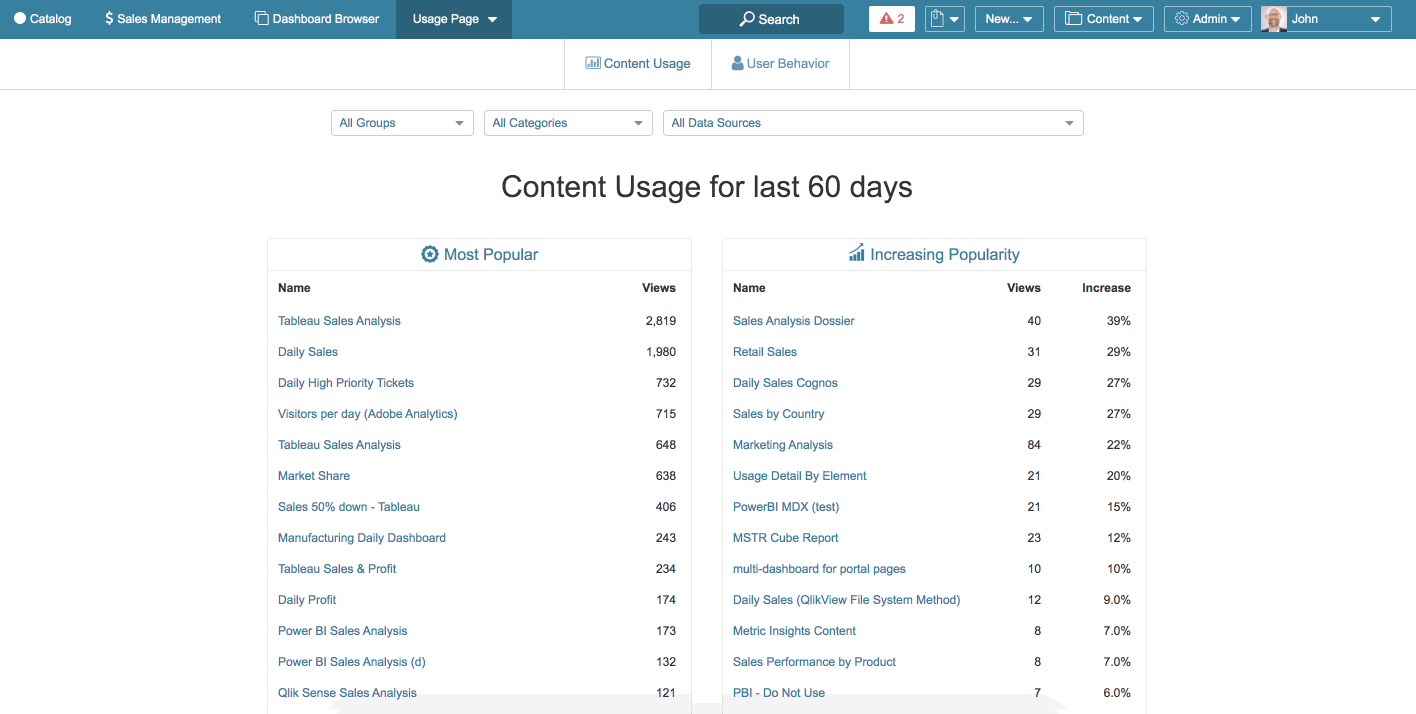When executives consider a merger, they look at all the ways in which the two organizations generate alignment, but the synergy between BI Tool stacks is seldom a consideration. Only after the ink is dry on the merger agreement, it falls to the BI Leadership within the two organizations to develop and execute a strategy for merging what typically tend to be incompatible BI Tool stacks.
A BI Portal can be an indispensable tool in creating order in the chaotic BI tool landscape that is in place after a merger. It can turn the task of BI Tool consolidation from a daunting project into a manageable undertaking.
Here are the reasons why a Business Intelligence Portal is an indispensable tool for any BI Tool professional tasked with implementing a post-merger consolidation.
Providing a single pane of glass
A BI Portal provides a single interface through which users from the combined organization can find their content. Users don’t need to know what tool was used to author a given report, they can simply search and find the relevant information in the portal. This capability provides simplicity and order in a post-merger world where everything is changing. It also gives the BI team the flexibility to make changes to the underlying tools and technologies in the BI stack without adversely impacting users.

Migrating the right content
Most large organizations have thousands of different dashboards and reports, across multiple BI Tools. You must decide which subset of the existing BI Tools to continue to post-merger. Then, the most daunting task is usually migrating content into the newly defined consolidated BI Infrastructure.
A Business Intelligence Portal can pull in usage Metadata from all the BI Tools across the two merging organizations. This information can then be used to guide the conversion effort in the following ways:
- Usage data can identify which specific dashboards and reports are used extensively so that conversion efforts are not wasted on migrating content that is obsolete or redundant.
- Whole teams or groups within the organization must be migrated together to the new BI Infrastructure. Usage data can guide the migration planning by identifying which clusters of content must be migrated together to support each business unit. This takes the guesswork out of sequencing and planning the conversion process.
Tracking Usage and Engagement
Merging technology stacks and migrating reporting is only the beginning. To make sure that the migration is effective, you must carefully track usage of the new consolidated BI stack to make sure that users are engaging with relevant content. The advanced usage tracking available in a BI Portal provides this critical diagnostic capability that allows you to iterate and continue to improve your implementation until you are certain that the post-merger migration is a huge success.

Want to learn more about how a BI Portal can simplify and accelerate the consolidation of BI Tools after a merger? Reach out for a demo here.